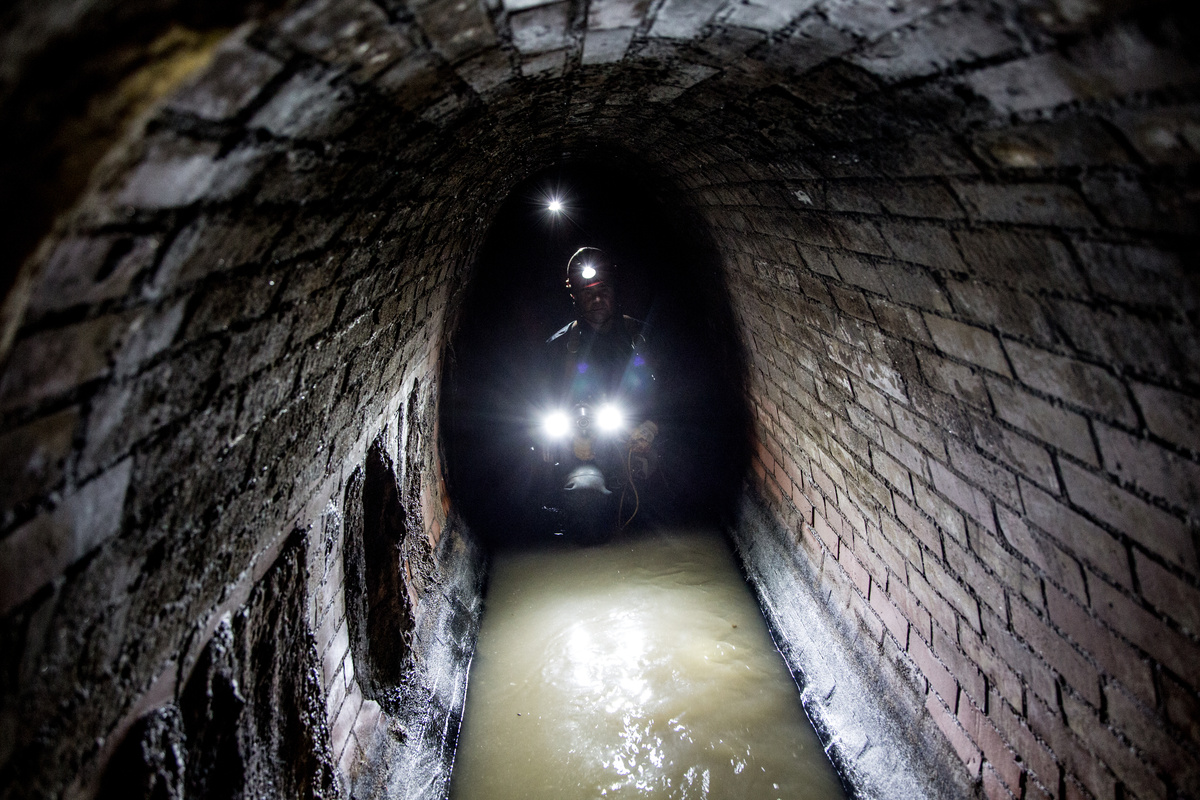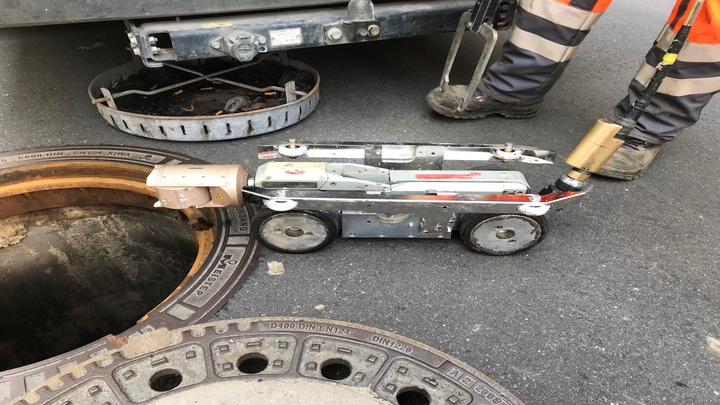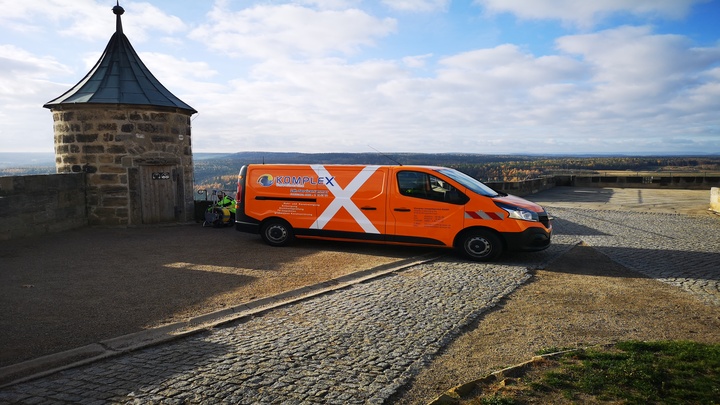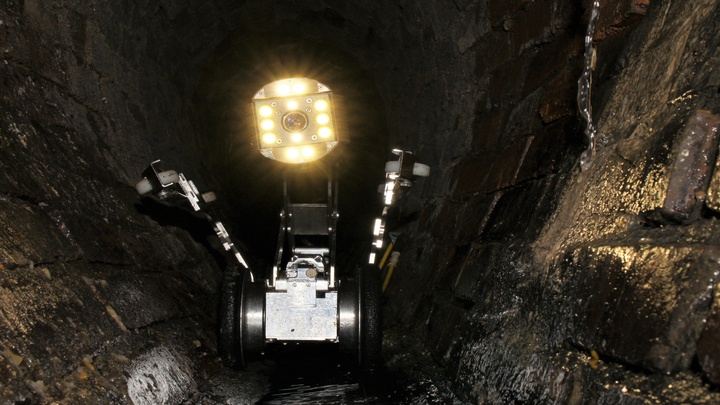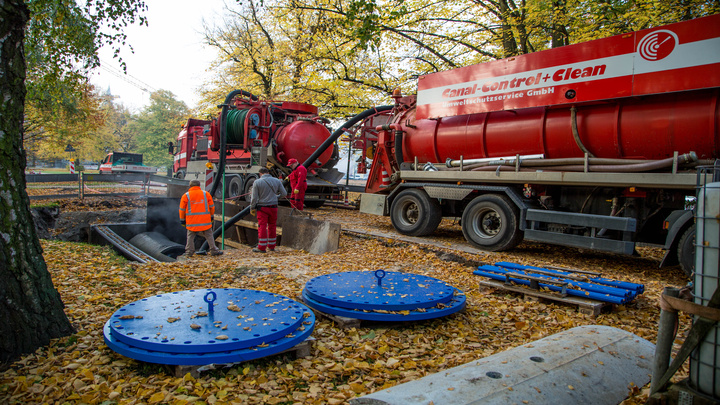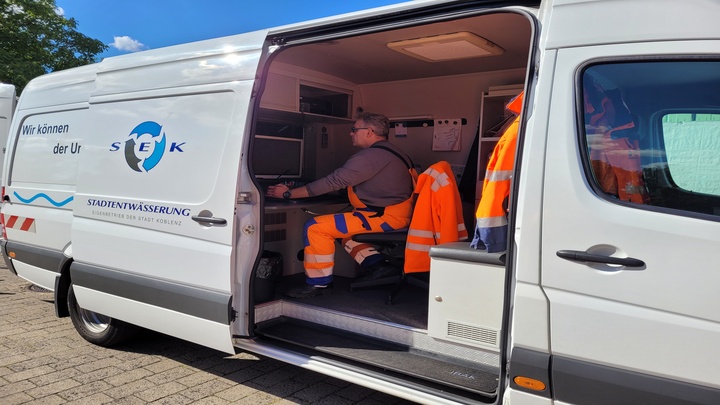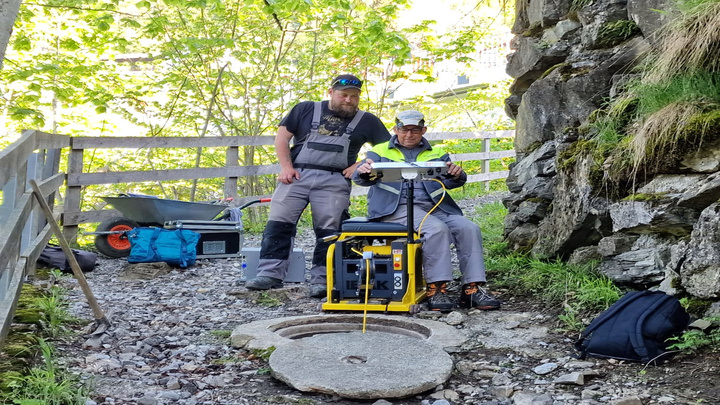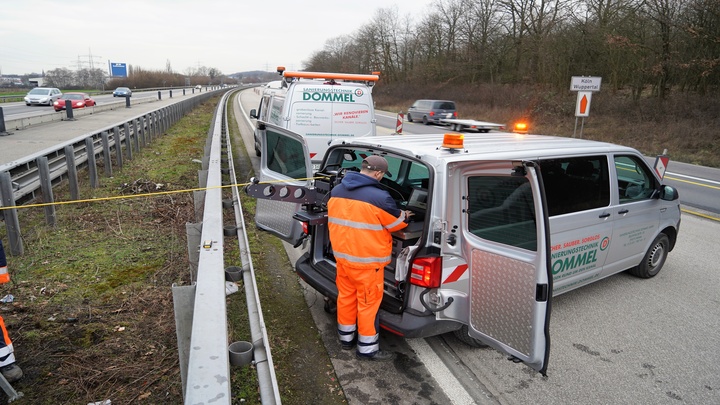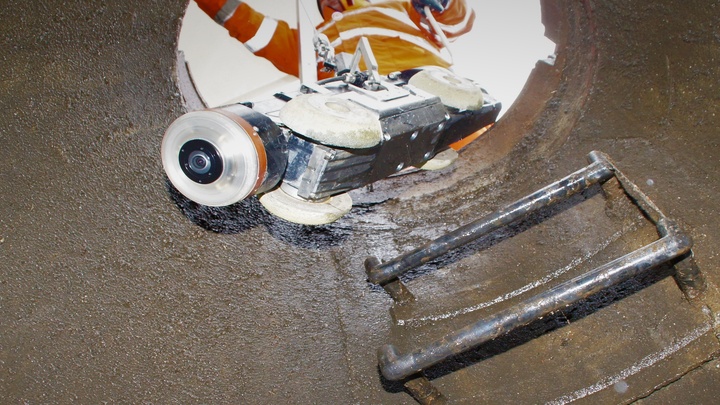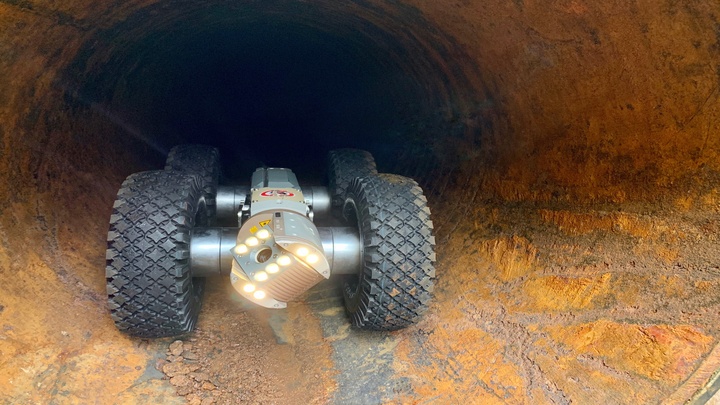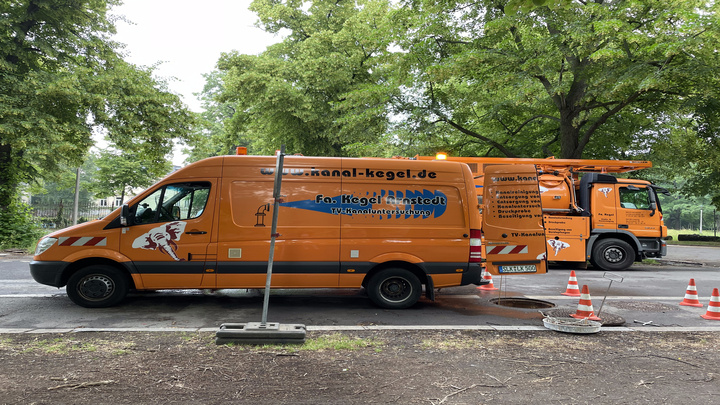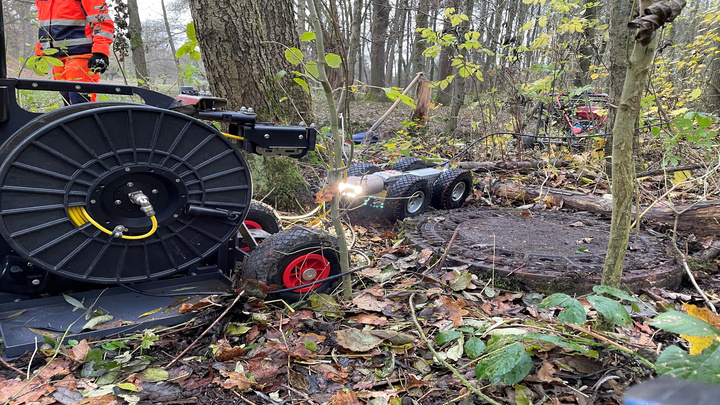Inspection of a main collector in an inverted egg-shaped profile
Since the beginning of the 19th century, a considerable part of Kiel's wastewater has flowed through the main collector under Kaistrasse and Holstenbrücke to Jensendamm. The brick-built egg-shaped sewer is one of the most important main disposal lines of the city of Kiel's urban drainage system. Almost all domestic wastewater and sewage is collected in this wastewater collector and conveyed to the sewage treatment plant. Due to the poor load-bearing capacity of the subsoil in Holstenbrücke, the wastewater collector was built on wooden piles. The 90-year-old in-situ concrete and clinker structure with a nominal diameter of DN 1200/1710 is upside down as compared to the usual position of pipelines with an ovoid cross-section. Accordingly, the larger semicircle of the egg-shaped pipe cross-section forms the bottom of the sewer. In Germany, egg-shaped cross-sections have occasionally been installed in an inverted position in order to lower the water level, to optimize the static load-bearing capacity or to facilitate accessibility.
Job
The main collector was not only inspected and cleaned over a length of 1.5 kilometres, but the 90 adjacent laterals were also checked for their condition and cleaned.
Challenge

In order not to obstruct road traffic in the city centre, but above all due to the large volume of water, the measure was carried out between 1:00 a.m. and 5:00 a.m. each day. Based on a filling level of 40%, approx. 600 litres per second still flow through the sewer even at night. This means that the work was carried out at the lowest water level possible from an economic point of view. A total of 9 employees were on duty at the night site of operation and up to 7 vehicles were on the spot.
Internal inspection and cleaning by indirect techniques was not possible due to the heavy sintering to be removed and the high position of the inflows, so that a manual inspection on foot was necessary. Extensive safeguards and protective measures had to be observed for this project. "At each entry and exit manhole, there were two safety people who monitored the employees among other things by keeping visual contact. In addition, personnel with respiratory apparatus were on site and the fire brigade and operations centre were involved in the planning of the sewer inspection. In addition, an elaborate sewer ventilation system with a capacity of 30,000 m3/h was used to create a breathable atmosphere. Thus, all safety requirements of Kiel's sewage department, represented by Eng. grad Thomas Koop, could be met," emphasized project manager Eng. grad Lüdeke Graßhoff.
Solution
The experienced CCC specialist for special measures and inspections on foot, Mr. Ünal Kartal, was equipped with the IBAK hand-held camera CERBERUS for optical condition capture. A headset provided a permanent intercom connection to the operator in the IBAK inspection vehicle. The operator followed the inspection on the screen at his workplace and documented the inspection according to the latest ISYBAU standard so that all station and defect codes were recorded both in the video and in the database.
The CERBERUS portable inspection system was designed for the inspection of large diameter sewers and projects two laser dots at a defined distance from each other so that the operator can easily estimate the scale of the image on the monitor. The video signal was transmitted to the IBAK inspection vehicle via a data cable. Ünal Kartal carried the cable with a total length of 500 meters with him via a pulley installed at the manhole. First, he aligned the camera with POWER LED lighting in the longitudinal direction of the pipe and scanned the sewer with maximum illumination. He then panned the camera around individual sections of the sewer one after the other. In consultation with his colleague above ground, he targeted conspicuous areas of the sewer wall and filmed them more closely where necessary. In addition, the specialist searched for any conspicuous features at the bottom of the sewer below the water level with his feet
In this way, the well-coordinated team from Canal-Control+Clean Umweltschutzservice GmbH carefully worked its way through the sewer metre by metre In order to be able to transport and clean out the larger contaminants, two cleaning vehicles were positioned at one manhole at the same time where necessary.
Result

Project manager Eng.grad Lüdeke Graßhoff is satisfied with the results of the special operations: "Up to 26 tons of sewer sand were removed from some pipe sections each night. Hardened deposits were completely removed by cutting, more than 140 tons of sewer sands were disposed of." Thus, the flow has been secured again in the large diameter sewer for the next few years. The inspection data obtained consolidates and updates the data on the sewer, which is in good condition. On the basis of this data, the employees of Kiel sewage department can deduce recommendations for planning future measures.
Company introduction

Canal-Control+Clean Umweltschutzservice GmbH was founded in 1983 and has been family-run ever since. Comprehensive sewer-related services are offered. These include sewer inspection, sewer cleaning and leak testing as well as the rehabilitation of drainage pipes.
More than 400 employees at 8 locations ensure the maintenance of the sewer system in northern Germany with the company's own own fleet of over 255 special vehicles.
